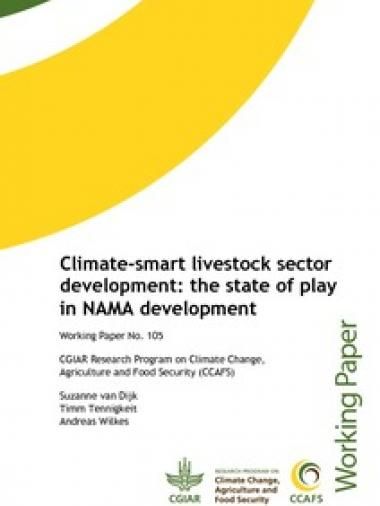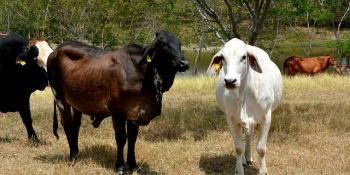Climate-smart livestock sector development: the state of play in NAMA development

Given the projected increase in the demand for animal-source foods in developing countries,
trends in livestock GHG emissions and other environmental impacts, there is an urgent need
to change livestock production. Despite its significant role in global GHG emissions, the
livestock sector also has a large potential to reduce its environmental impacts while
increasing productivity. Mitigation practices also have other co-benefits, addressing land
degradation (conservation of natural resources), livestock waste, resource efficiency and
income generation for the rural poor.
Progress in implementation of mitigation actions has been slow. There is limited information
on emerging experiences with Nationally Appropriate Mitigation Actions (NAMAs)
development and implementation, pointing to the need to better document what is being done
and to share knowledge and experience among interested countries. In particular, interested
countries would benefit from better knowledge of the technical and stakeholder processes
through which NAMAs are being developed; links between NAMAs and other livestock
sector policies and programs; barriers to adoption of promoted practices and means to address
them and financing arrangements for NAMA implementation. Supporting interested countries
to share experiences in these and other dimensions would help reduce the gap between
‘intent’ and actual NAMA implementation.
Citación
van Dijk S, Tennigkeit, T, Wilkes A. 2015. Climate-smart livestock sector development: the state of play in NAMA development. CCAFS Working Paper No. 105. Copenhagen, Denamrk: CGIAR Research Program on Climate Change, Agriculture and Food Security (CCAFS).
